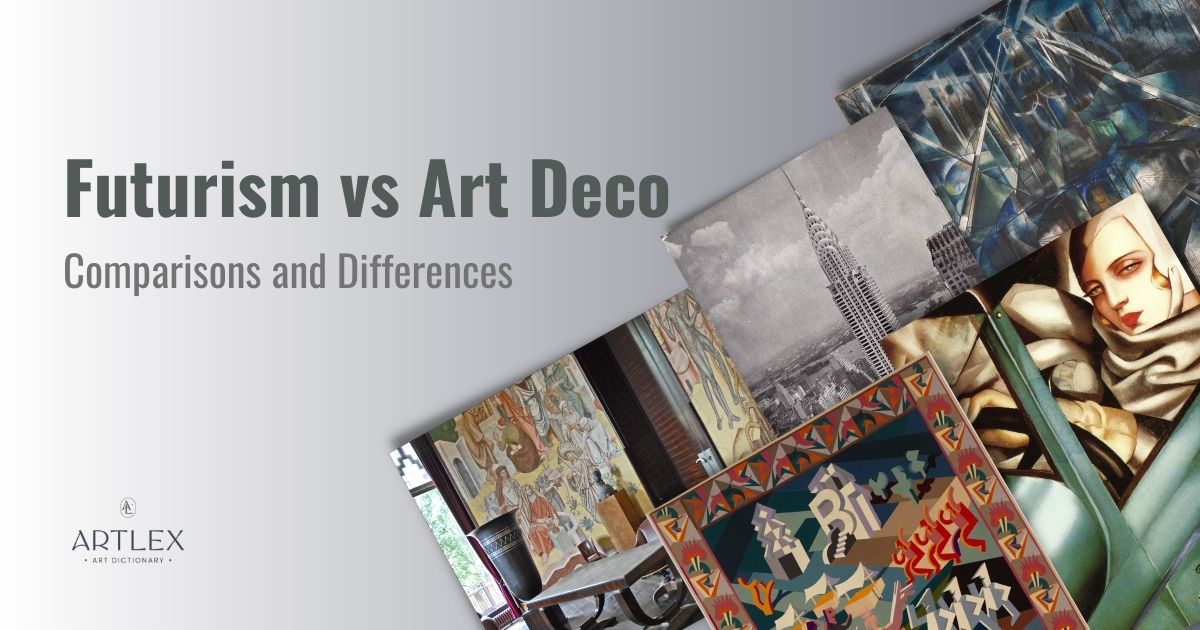Futurism vs. Art Deco
What is Futurism?
Futurism is an avant-garde art and social movement that originated in Italy. Several manifestos were created in the wake of futurist philosophy and the most important of them was the Manifesto of Futurism, published by Filippo Tommaso Marinetti in 1909. The attitude towards the past that the Futurists had was based on an uncompromising rejection of tradition. On the other side, Futurists were glorifying the cult of youth, industrialization, speed, technology, and modernization. Futurists were often emphasizing the violent component of the struggle for cultural and wider social change. Futurism developed in literature as well as in painting, sculpture, architecture, industrial design, music, film, dance, and fashion.
The characteristics of futurism include: the rejection of traditional value frameworks in the field of culture, ie striving for art freed from the weight of its past, highlighting youth as a key capital of social development, technology, modernization of urban spaces, the dynamism of industrial plants, exploring speed through the representation of objects such as cars or airplanes.
Notable Futurists were : Umberto Boccioni, Giacomo Balla, Carlo Carrà, Gino Severini, Gerardo Dottori, Fortunato Depero, Luigi Russolo, Natalia Goncharova, Mikhail Larionov, Antonio Sant’Elia.
Futurism influenced Art Deco, Cubo-futurism, Constructivism, Rayonism, Vorticism, and Precisionism.
See our full Futurism Art Movement Guide for more information.
What is Art Deco?
Art Deco is a style in visual art and architecture that originated in France on the eve of the First World War and had a global expansion in the interwar period. The name of this style comes from the name of the International Exhibition of Modern Decorative and Industrial Arts held in Paris in 1925. This style developed a characteristic visuality that rested on geometrization, a modern approach to traditional themes and motifs, as well as on the use of luxurious materials impeccably crafted. This style developed in the fields of painting, architecture, fashion, jewelry, furniture design, as well as industrial and car design.
The characteristics of Art Deco are a combination of the heritage of ancient cultures such as Egyptian, Persian, Greek, and Japanese with the products of ongoing modernization processes. The aesthetics of Art Nouveau, more specifically the Central European artistic phenomenon known as the Vienna Secession, had a great influence on the development of Art Deco. The unique eclecticism of Art Deco is closed with early modernist and avant-garde influences through Post-Impressionism, Cubism, and Futurism.
Notable Art Deco artists were René Lalique, Léon Bakst, Jean Dunand, Émile-Jacques Ruhlmann, Sonia Delaunay, Tamara de Lempicka, Romain de Tirtoff Erté, Le Corbusier, Georges Lepape, Jean Després.
- Similarities Between Futurism and Art Deco:
- Admiration for Modernity: Both celebrated advancements in technology, urbanization, and industrial design.
- Geometrization: Both incorporated Cubist principles, with Futurism emphasizing dynamism and fragmentation, while Art Deco applied geometrization to modernize traditional forms.
- Skyscraper Architecture: Futurist ideas on verticality and modern cities influenced Art Deco’s iconic skyscrapers, like the Chrysler Building.
- Influence on Multiple Arts: Both movements influenced diverse fields, including painting, sculpture, architecture, fashion, and industrial design.
- Key Differences Futurism and Art Deco:
- Relation to Tradition:
- Futurism rejected all traditions, seeking to eliminate historical influences.
- Art Deco reconciled ancient aesthetics with modern materials and techniques, creating a fusion of the old and new.
- Structure of the Movement:
- Futurism was a structured, manifesto-driven avant-garde movement with political elements.
- Art Deco was more informal, emphasizing style over ideology.
- Decorativeness:
- Futurism rejected decorativeness as impractical and outdated.
- Art Deco embraced lavish decoration, luxury materials (marble, ivory, jade), and ornamentation, particularly in architecture and design.
- Relation to Tradition:
- Futurism’s Influence on Art Deco:
- Futurism’s glorification of modernization inspired Art Deco’s celebration of industrial progress.
- Futurism’s dynamic, geometric visual language shaped Art Deco’s stylized, modern forms, especially in painting and design.
- Both movements share connections with Cubism, Constructivism, Precisionism, Bauhaus, and De Stijl.
See our full Art Deco Guide.
Futurism and Art Deco Similarities
The similarities between Futurism and Art Deco are reflected in admiration for modernity, geometrization, the approach to skyscraper architecture as well as in the influence that both Futurism and Art Deco had on several arts.
Futurism vs. Art Deco: Admiration for the modernity
Modernization processes were the primary inspiration for artists from the Futurist movement as well as those who belonged to Art Deco. The significant and rapid changes brought about by these processes were visible in increasingly developed traffic, new urban solutions, in the construction of modern industrial complexes. Symbols of these social changes are visible in the art of Futurism and Art Deco.
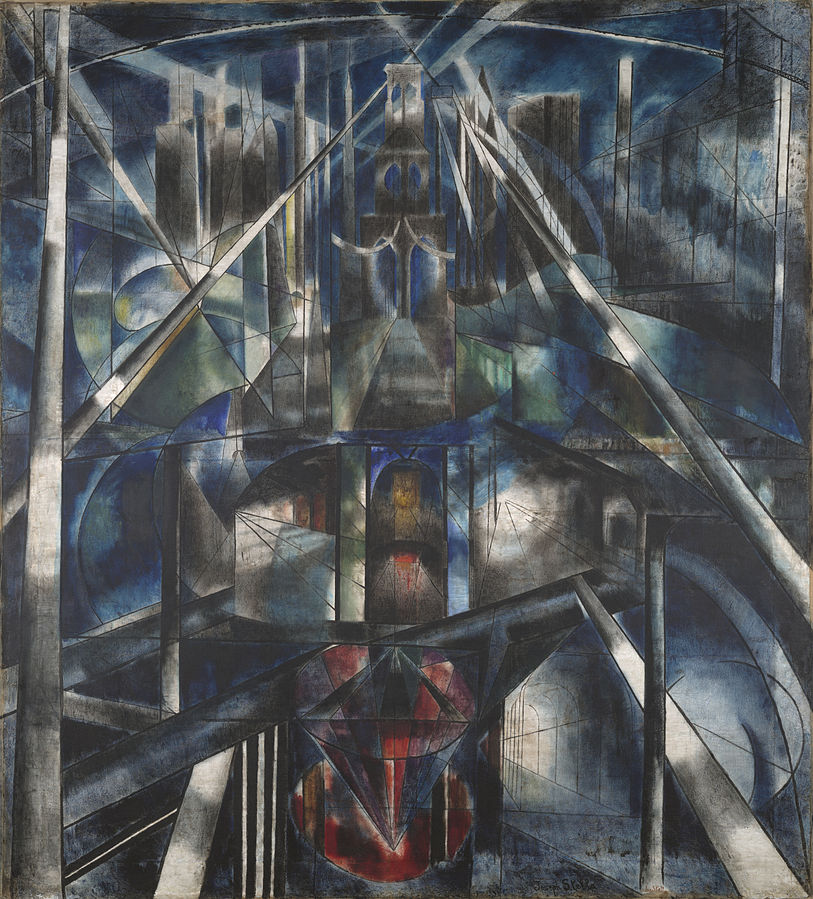
Futurism vs. Art Deco: Geometrization
Common to the visual poetics of Futurism and Art Deco is the dominant Cubist influence. Geometrization, as well as experimentation with perspective as formulated by Cubism, were the basis for the development of the artistic language of Futurism and Art Deco. Although the starting point is the same, Futurism and Art Deco approached geometrization differently. Futurism explored the principles of movement and speed by geometrizing the scene and breaking it up into multiple planes. Using divisionist methods, the Futurists brought their expression closer to abstraction. On the other hand, Art Deco treated Cubist geometrization much more moderately. Relying on the tradition of figurative painting, Art Deco used geometrization as a means of modernizing traditional visuality.
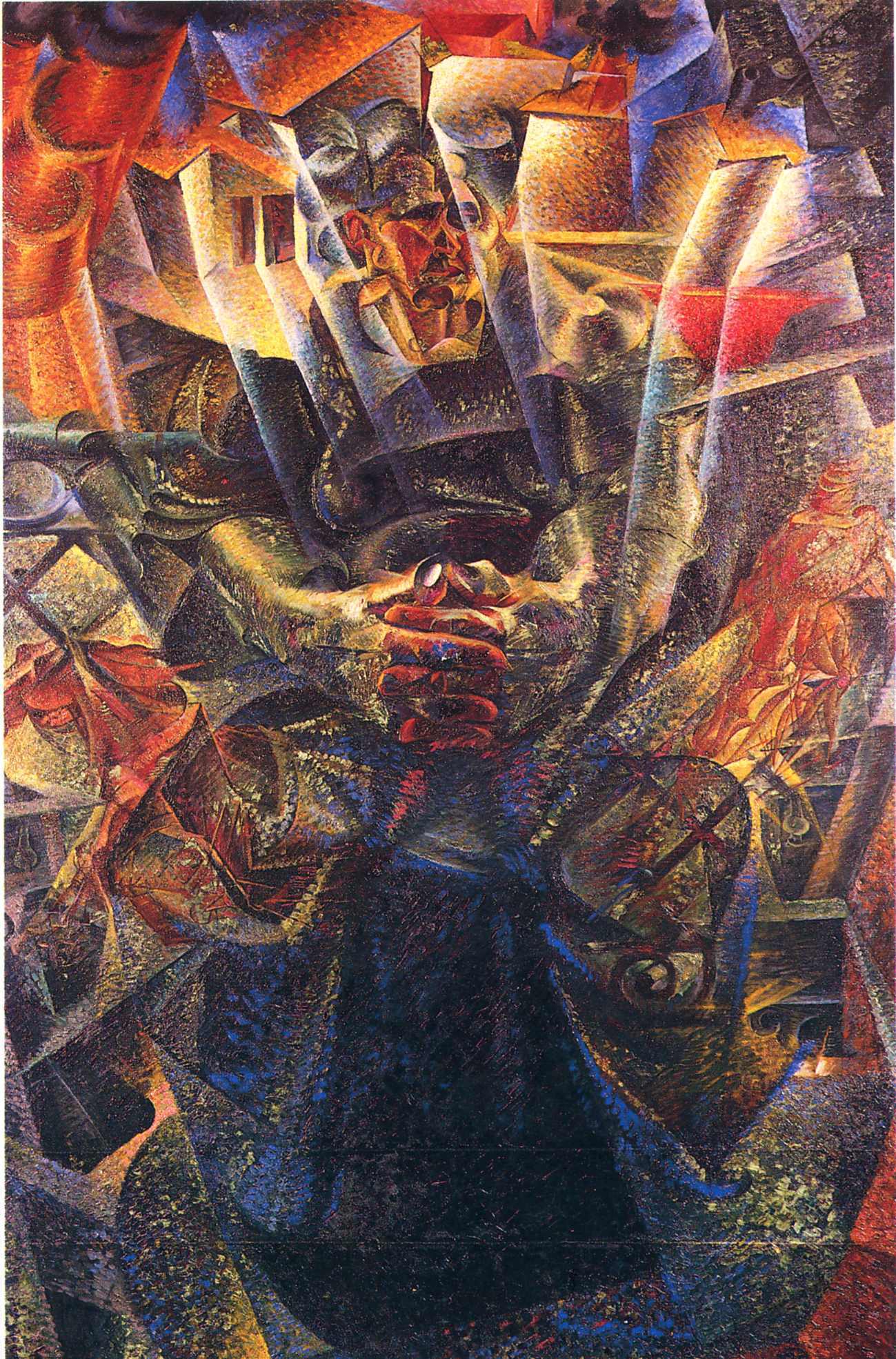
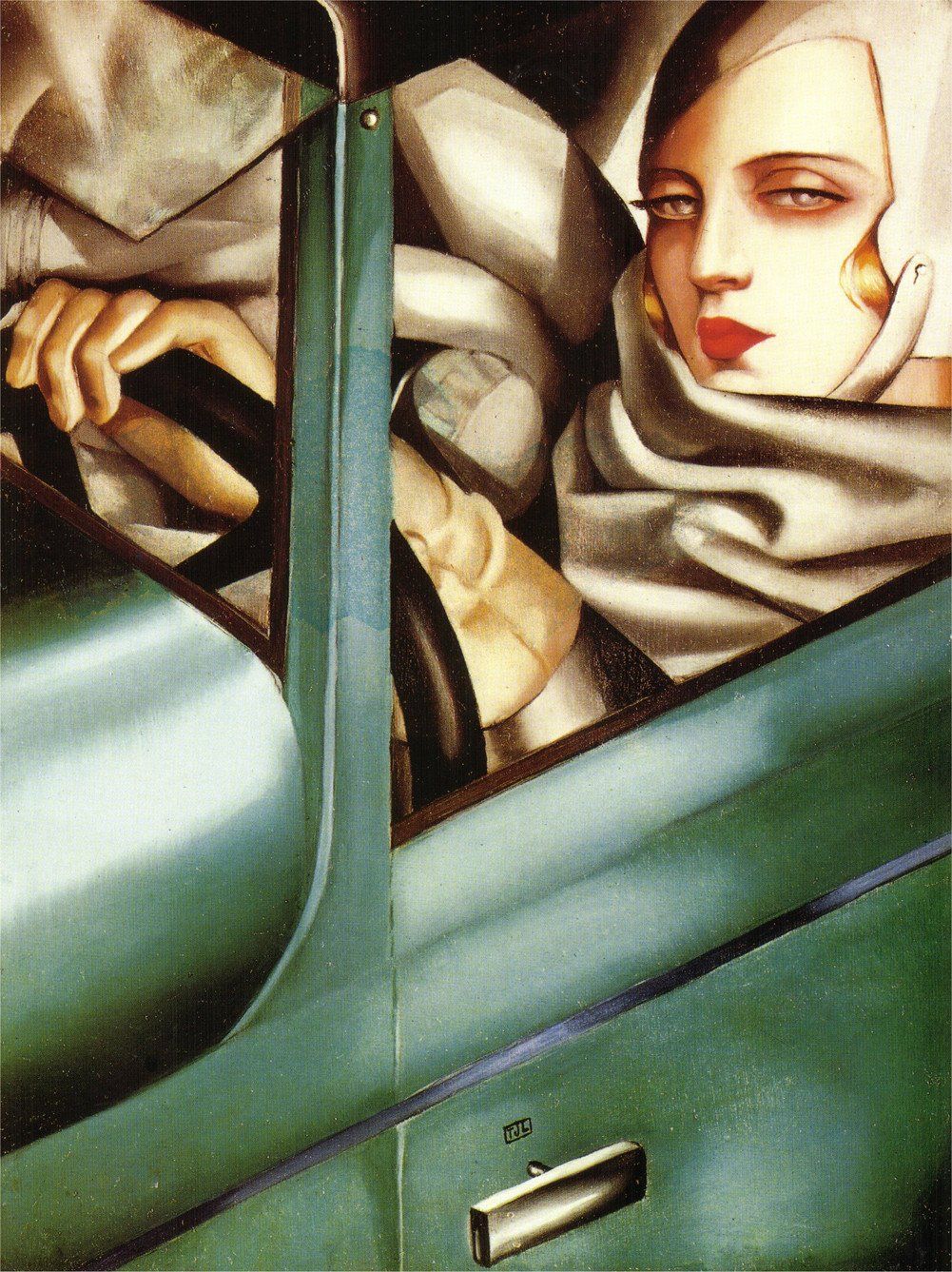
Futurism vs. Art Deco: Influence on many arts
Futurism and Art Deco influenced artists from many fields. The Futurists wanted to impose their vision of artistic and cultural life on society through their social involvement, which grew into a political struggle. With numerous manifestos, Futurism paved the way for development in the field of literature, painting, sculpture, music, architecture, theater, applied arts, etc. Considering that Art Deco did not develop in clearly defined organizational frameworks like Futurism, it offered its vision of changing the dominant aesthetics by the total coverage of artistic production as well as mass production, which was then in its early stages.

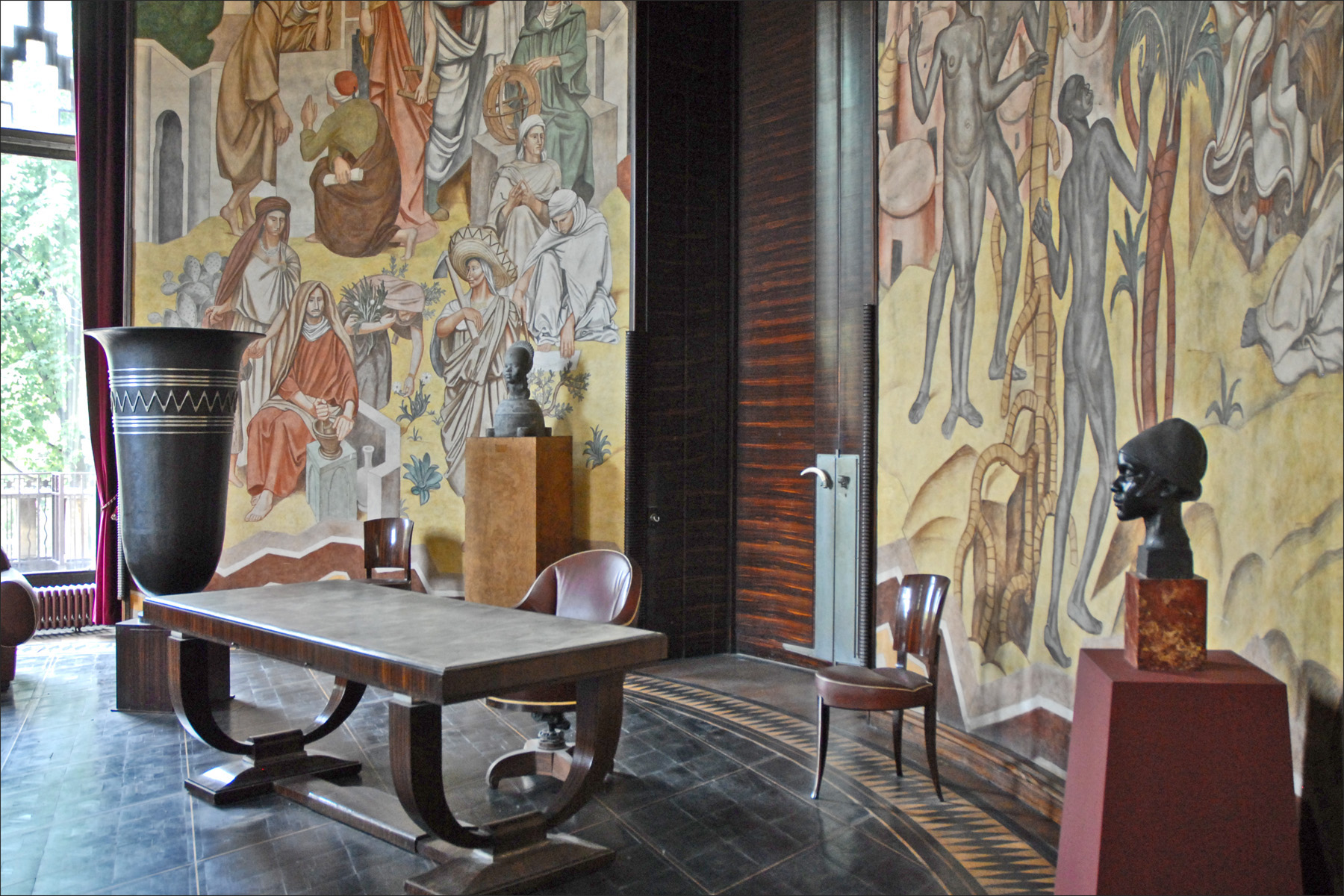
Futurism vs. Art Deco: Skyscraper architecture
In the Manifesto of Futurist Architecture written by Antonio Sant’Elia, the idea of breaking with the previous architectural tradition is emphasized. In his work, La Città Nuova / The New City from 1914 Sant’Elia insists on the high-rise buildings as a necessity of the new city space. These ideas especially came to life during the interwar period, when the most famous examples of Art Deco architecture were created. Skyscrapers as a progressive step forward in architecture were the subject of fascination in Futurism and Art Deco. Although the futurist theory of architecture was a pioneering view of the role of skyscrapers in modern architecture, the Futurists did not leave behind an example of this type of building. These ideas experienced their first authentic flowering precisely through Art Deco so that after modernist tendencies and international style, a new skyscraper architecture was generated precisely through Neo-futurism.
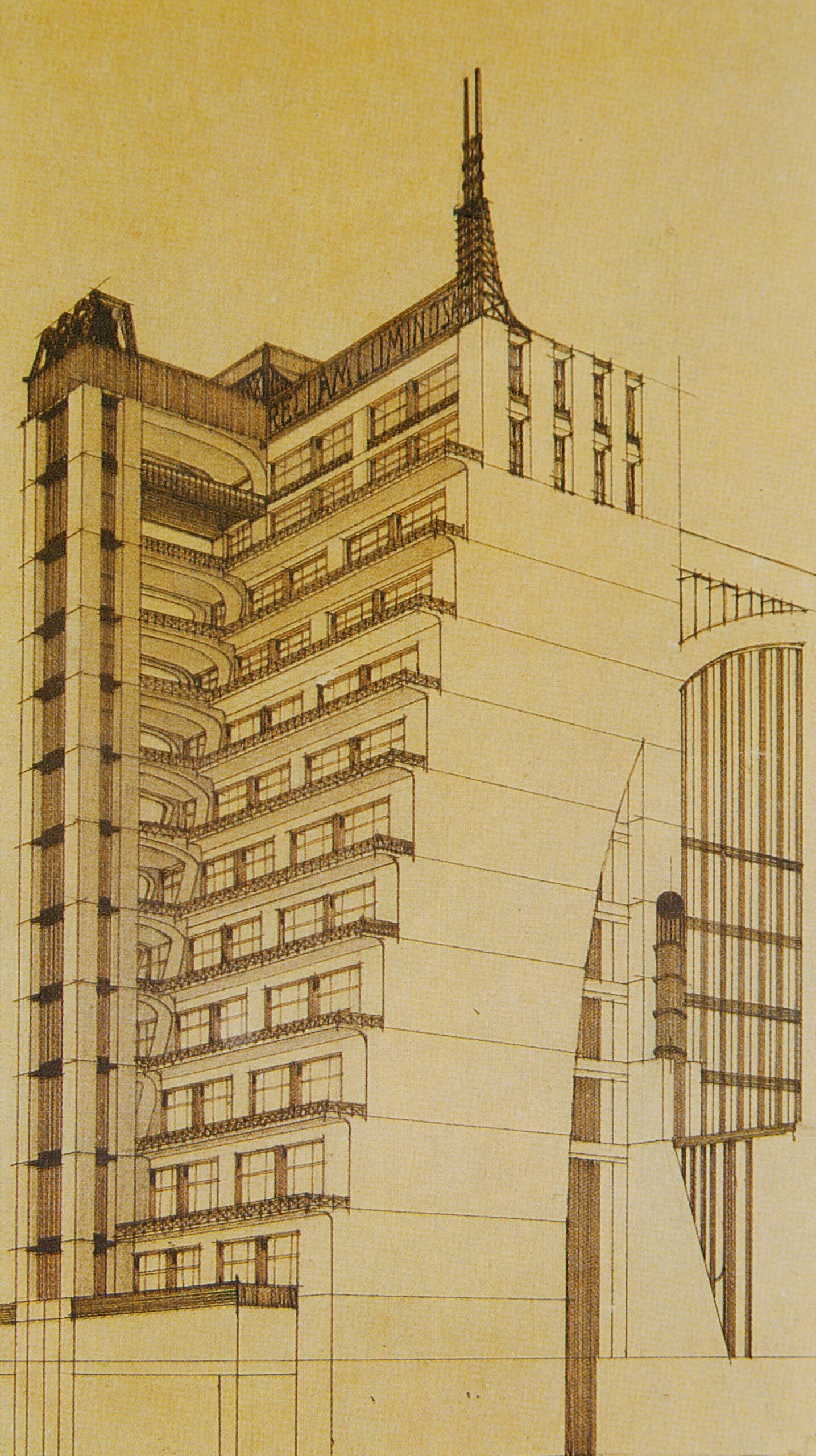
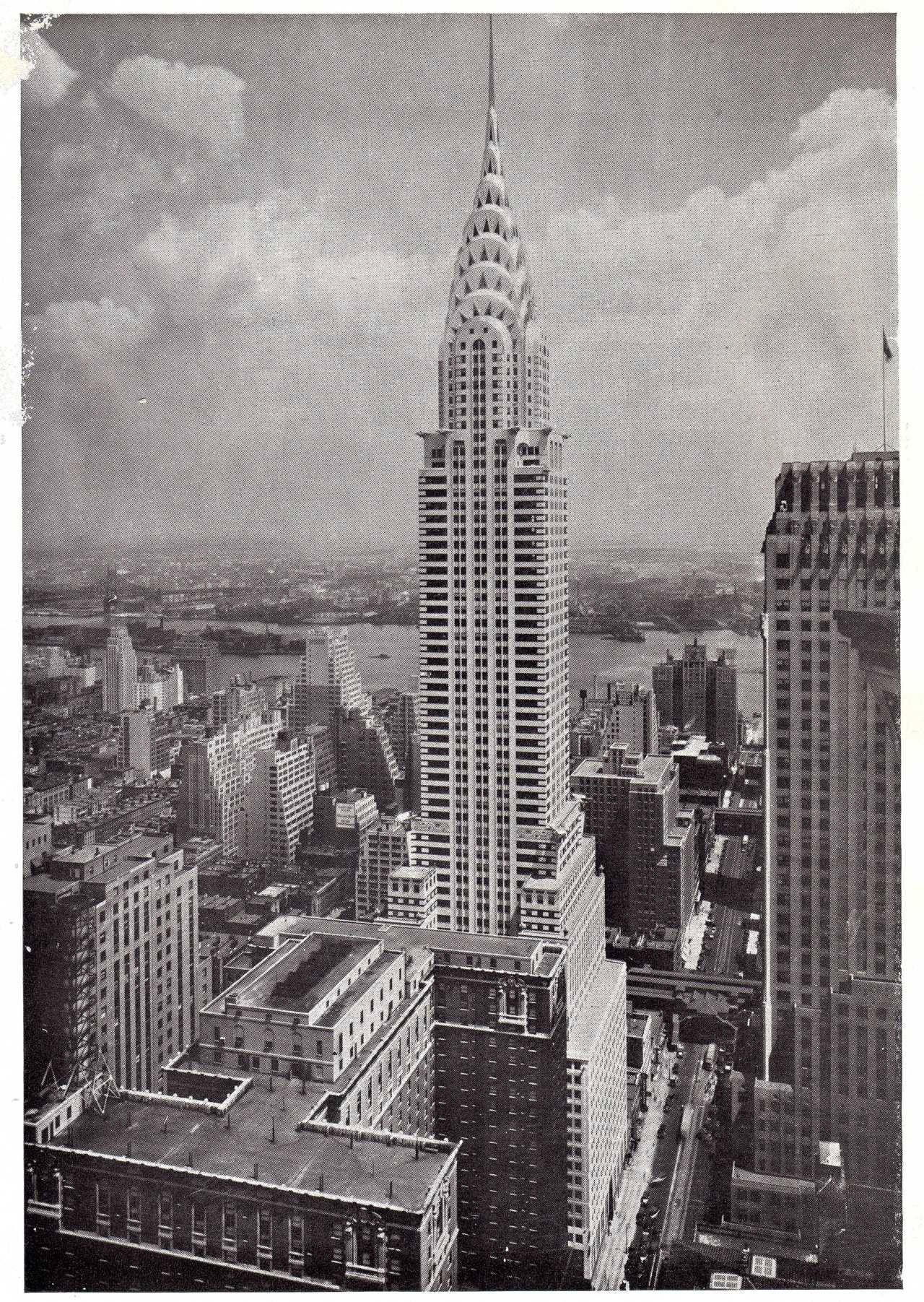
Futurism and Art Deco Differences
The differences between Futurism and Art Deco can be recognized in relation to the phenomenon of continuity in the art, in the formal and informal structure of the movement, as well as in the role of decorativeness.
Futurism vs. Art Deco: Relation to continuity in the art
The relationship to the past is the fundamental difference between these two artistic phenomena – Futurism and Art Deco. It is precisely the attitude towards the past that is the basis for building a futuristic ideology based on an aggressive struggle for a world that will glorify the new against the old. The Futurists were almost completely exclusive in their exclusivity when it comes to achievements of the past. They believed that in order to build a prosperous, enlightened, and economically healthy society, it is necessary to get rid of the fascination with the past and direct all capacities to the invention. They were particularly critical of the affection Italians have for Roman culture, considering it a destructive projection into the past. In its approach, Art Deco reconciled Greek and Roman civilization with Mayan civilization and with the processes of industrialization and new regulation of urban spaces during the interwar period. For Art Deco artists, the artistic heritage of the ancient peoples was an aesthetic starting point that was shaped into a modern form by new technical means. Art deco eclecticism is completely opposed to futurist exclusivity.
Futurism vs. Art Deco: Movement and Style
Futurism and Art Deco developed in completely different frameworks. Although both of these phenomena develop in the context of modernism, Futurism develops as an avant-garde movement, while Art Deco has an informal character from the beginning. Both Futurism and Art Deco achieved an international presence, with Futurist influence declining precipitously after the First World War while Art Deco was recognized as the desired aesthetic of the post-war, rebuilding world. Manifestos as a recognizable result of the activity of the Futurist movement, as well as the political activity that this type of organization made possible, were completely absent from the Art Deco artists.
Futurism vs. Art Deco: Decorativeness
The attitude toward decorativeness is another of the big differences in the creative approach of Futurists and Art deco artists. Futurists completely rejected the concept of decorativeness. They considered it redundant, archaic, impractical, and decadent. Art for the man of the industrialized age should correspond to his needs and the aesthetics of the age in which it is created. The Futurists considered the polemics about the question of style, which abound in the history of art, to be bypassing the essence that their revolutionary approach should bring back. The tendency toward transparency and simplicity of geometrized forms among Futurists is particularly visible in architecture. It was precisely in this field that Art Deco artists insisted on the most complex network of quotations from ancient cultures. Various sculptural forms, stained glass windows, and monumental clocks adorn the Art Deco skyscrapers. Art deco artists insisted on the use of luxurious materials such as marble, silver, ivory, jade, and crystal.
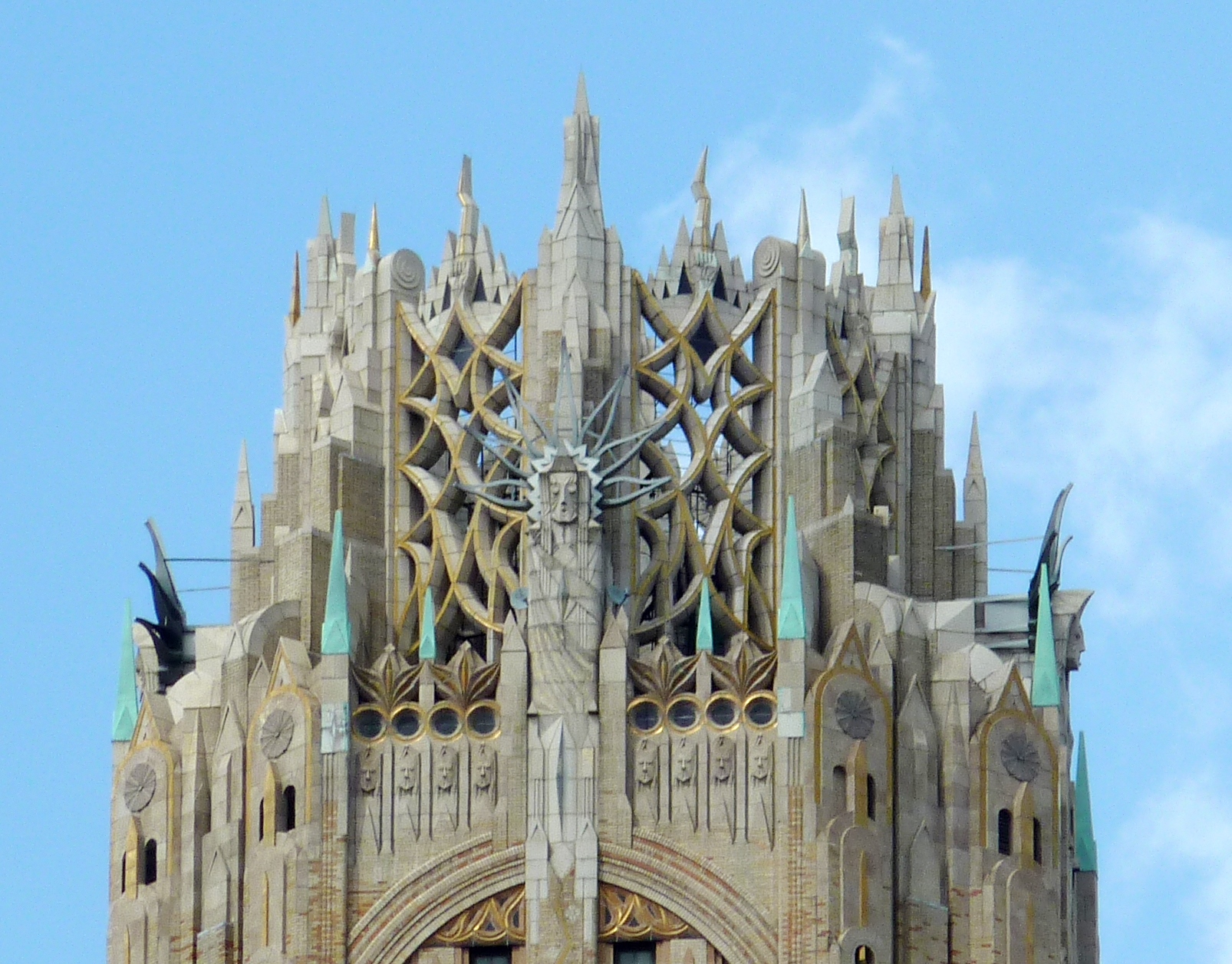
How did Futurism Influence Art Deco?
The influences that Futurism had on Art Deco can be recognized in the glorification of modernization. All the elements of that complex social process were an inspiration to the Futurists and thus opened the way for many artistic groups that will further explore this phenomenon of social transformation. The new forms that Futurism offered in painting and sculpture, which are based on Cubist solutions, were important for the development of Art Deco. It was the Futurist visual language that interpreted the purely visual experiment of the Cubists in such a way as to contain the principles of the experience of modernization. On that track, Art Deco painting is developing, which brings a significantly softened, stylized version of the same experiences of the modern era.
What other Art Movements are Similar to Futurism and Art Deco?
De Stijl, Constructivism, Precisionism, and Bauhaus stand out as related artistic movements.

